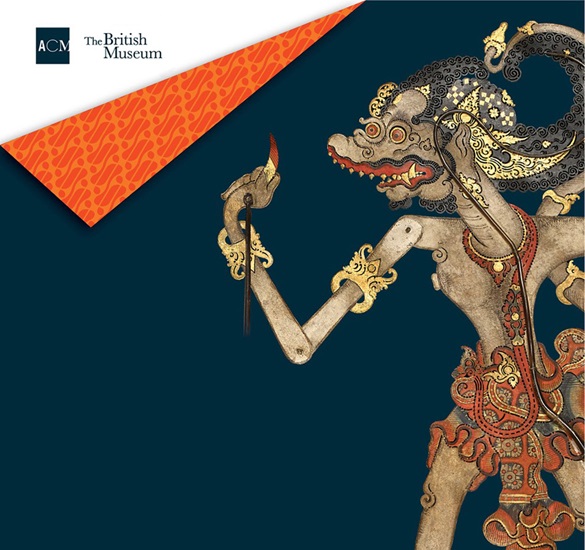It is needless to say that Sir Stamford Raffles has been deeply entrenched in Singapore’s history. We have named prestigious institutions after him so much so that his very name has become synonymous with the elite. Yet little is known about the man beyond the fact that he “founded” Singapore – his background, his conquests, his failures, all elusive to the average Singaporean. Curated by Dr. Stephen Murphy and Naomi Wang from the Asian Civilisations Museum, together with Alexandra Green, the Henry Ginsburg Curator for Southeast Asia at the British Museum, Raffles in Southeast Asia: Revisiting the Scholar and Statesman seeks to unpack the man behind the name to mark the bicentennial founding of Singapore.
The exhibition can be broadly categorized into various sections. It begins by examining Raffles’ Southeast Asian collections, which ranges from masks, to wayang kulit (shadow puppet) puppets, and Gamelan sets. It is through his collection that the curators try to tease out the interests of Raffles’, and to an extent, European views about a region they colonized, bringing to light the reductive gaze of which they subjected their colonies to. While some have been quick to critique how this could be a form of neo-colonialism, Wang points out that in order to expose the erroneous colonial gaze, they had to first present it. She further exemplifies how the collection works in tandem with the labels to highlight the incongruity of his collections in the local Southeast Asian context. Additionally, Wang shared that the curatorial team carefully traced the origins of artefacts to properly address the notion of cultural imperialism.
Following which, the exhibition ventures into the counterfactual, in other words, the things that Raffles did not collect. By doing so, it attempts to draw out and scrutinize the way in which the colonials had imposed a sense of exoticism onto local realities as well as bring to light the limitations of colonial collections. Raffles was also deeply interested in the world of natural history and scientific thought as it was a mark of being rational and inadvertently an indication of being civil. Therefore, the exhibition very briefly glosses through Raffles’ role as a scholar and his involvement in scientific circles, which allowed him to gain a social status in Britain.
The last two sections of the exhibition touches upon Raffles’ conquests and his unfortunate ending. Using indigenous sources, the curators attempt to complete the unspoken narrative of Raffles, how he had invaded and cleverly entangled himself into local politics in order to gain a foothold in the region. Very often, Raffles has been revered as the founding father of Singapore but the shrewd manner in which he did it, that irrevocably altered the politics of the Johor-Riau-Lingga Sultanate, has not been emphasised in our local narrative. Thus, the exhibition brings a fresh perspective to our past and reminds us that history is not as black and white as it seems.
Co-curated with the British Museum, this exhibition showcases around 240 masterpieces from 14 internationally renowned partner institutions and private collection to piece together Raffles’ involvement in the region and to provide a vastly different narrative than the one typically told in history textbooks. Not an easy feat, given that Raffles is one of the biggest historical figure in Singapore, as Wang notes. “When you have that kind of imagined but very populist narrative to contend with, [the question is] how do you take this person apart? How do you unpeel the layers? And if we wanted to say something, it had to be by way of evidence and the evidence that we had was actually his collection that was in a lot of ways a time capsule of that moment,” Wang shares.
Tying back to the Bicentennial theme of 2019, Wang hopes that through this exhibition, visitors will have a better sense of who Raffles was, his beliefs, how he thought about civilisations and what colonial rule was about. She also hopes that Singaporeans take away the importance of indigenous accounts and artefacts as people typically question the credibility of indigenous accounts, reducing it to merely mythologies. She asserts that indigenous points of view give an expanded idea of history and creates a two-way conversation about historical accounts from the European gaze as well as the indigenous response to how they viewed the Europeans. Lastly, Wang hopes that through this exhibition, Singaporeans learn to be critical of the power of colonial collections beyond their historical importance and not simply take them as mere artefacts behind a glass wall.
Overall, the exhibition is an ambitious attempt at picking apart what many have thought Raffles to be. Its efforts at piecing together objects from Raffles collection to local accounts no doubt create a more holistic understanding of Raffles’ involvement in the region rather than a one-dimensional discourse of the statesman. Perhaps as we reflect on our progress, it is also timely that we actively engage with our history in order to reclaim our identity as Singaporeans.
Raffles in Southeast Asia: Revisiting The Scholar and Statesman is still showing at the Asian Civilisations Museum until 28th April.


